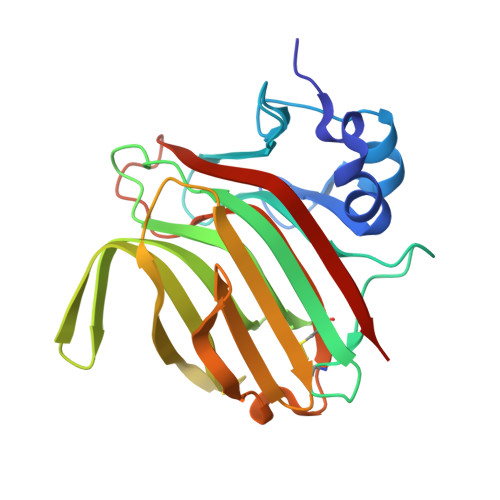Unraveling the molecular mechanism of polysaccharide lyases for efficient alginate degradation.
Rivas-Fernandez, J.P., Vuillemin, M., Pilgaard, B., Klau, L.J., Fredslund, F., Lund-Hanssen, C., Welner, D.H., Meyer, A.S., Morth, J.P., Meilleur, F., Aachmann, F.L., Rovira, C., Wilkens, C.(2025) Nat Commun 16: 2670-2670
- PubMed: 40102416
- DOI: https://doi.org/10.1038/s41467-025-56754-5
- Primary Citation of Related Structures:
6YWF, 7NCZ, 7NL3, 7NM6, 7NPP, 7NY3, 7O6H, 7OOF, 7ORY, 7P25, 7P90, 7PBF, 8BJO, 8BXZ, 8C0M, 8C3X, 8P6O, 8PC3, 8PC8, 8PCX, 8PDT, 8PED, 8QIZ, 8QLI, 8QMJ, 8R43, 8RBI, 9G98, 9G99 - PubMed Abstract:
Alginate lyases (ALs) catalyze the depolymerization of brown macroalgae alginates, widely used naturally occurring polysaccharides. Their molecular reaction mechanism remains elusive due to the lack of catalytically competent Michaelis-Menten-like complex structures. Here, we provide structural snapshots and dissect the mechanism of mannuronan-specific ALs from family 7 polysaccharide lyases (PL7), employing time-resolved NMR, X-ray, neutron crystallography, and QM/MM simulations. We reveal the protonation state of critical active site residues, enabling atomic-level analysis of the reaction coordinate. Our approach reveals an endolytic and asynchronous syn β-elimination reaction, with Tyr serving as both Brønsted base and acid, involving a carbanion-type transition state. This study not only reconciles previous structural and kinetic discrepancies, but also establishes a comprehensive PL reaction mechanism which is most likely applicable across all enzymes of the PL7 family as well as other PL families.
- Departament de Química Inorgànica i Orgànica (secció de Química Orgànica) & IQTCUB, Universitat de Barcelona, Barcelona, Spain.
Organizational Affiliation:



















